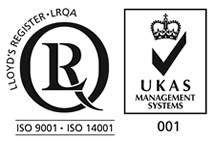
Main Products
Copyright 1998-2025 Firmetal Group All Rights Reserved. | Sitemap
Ta2.5W foil is a high-performance alloy material with tantalum (Ta) as the base and 2.5% tungsten (W) added. This alloy forms a stable single-phase body-centered cubic (BCC) structure through a solid solution strengthening mechanism, with tungsten atoms uniformly distributed in the tantalum lattice, significantly enhancing the material's high-temperature strength and creep resistance. Its composition design maintains the inherent advantages of tantalum while achieving an optimized performance balance through trace tungsten doping. The theoretical density reaches 16.65 g/cm3, approaching that of pure tantalum (16.69 g/cm3), demonstrating the high-density characteristic of tungsten. The melting point is raised to 3050±50℃, which is approximately 3% higher than that of pure tantalum (3017℃). The thermal conductivity is about 54 W/(m·K), and the coefficient of linear expansion is 6.5×10-6/K (20-1000℃). It maintains excellent dimensional stability in high-temperature environments.
At room temperature, it has excellent corrosion resistance to concentrated hydrochloric acid (concentration ≤37%), sulfuric acid (≤98%), nitric acid (≤65%) and aqua regia, with a corrosion rate of less than 0.01mm /year. It remains stable in a phosphoric acid environment below 200℃, but high-temperature molten alkaline solution can cause surface oxidation.
High-temperature oxidation resistance: A dense Ta2O5 oxide film is formed below 500℃, effectively blocking oxygen diffusion. When the temperature exceeds 600℃, the oxidation rate accelerates, and surface nitriding treatment is required to enhance the protective performance. Strength and plasticity balance: The tensile strength in the annealed state reaches 450-550 MPa, and the elongation is approximately 25-35%. The cold-rolled strength can be increased to over 800 MPa while maintaining a plastic deformation capacity of more than 10%, which is superior to pure tantalum materials.
High-temperature mechanical properties: It still maintains a tensile strength of 280-320 MPa at 1000℃, which is significantly higher than that of pure tantalum (about 200 MPa). The creep resistance temperature threshold has been raised to 1300℃, which is 150-200℃ higher than that of pure tantalum.